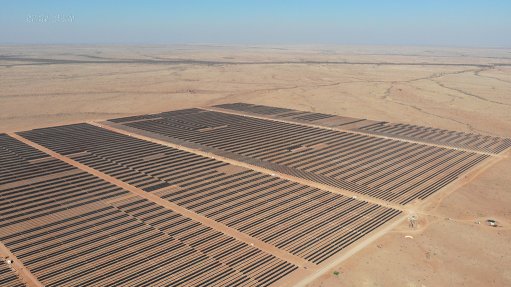Data-driven approach for water approached


TANK TRACING A data-driven approach will help optimise water use and its infrastructure suggest Royal HaskoningDHV
The time to apply a data-driven approach to optimise water distribution in South Africa is now, says consultancy firm Royal HaskoningDHV advisory group director Bongani Dladla.
“This could be the country’s catalyst for digital transformation – the point when municipalities start using technology and data to improve service delivery.”
Royal HaskoningDHV believes that South Africa can optimise its water infrastructure by developing a clear understanding of existing assets by using a more efficient and smarter approach to capturing and using information, known as a building/better information modelling/management, or BIM.
In addition to incorporating a digital representation of physical and functional characteristics of infrastructure, a BIM approach can also provide a shared knowledge basis of watercentric data.
BIM offers stakeholders the tools and insight to efficiently plan, design, build and manage infrastructure holistically over its life cycle.
He says that until government implements its economic recovery and infrastructure plan, which has a big water infrastructure focus, the tank-and-tanker system and approach needs to be optimised as an effective stopgap measure to reduce the effort, energy, and cost required to get water to more people.
BIM enables stakeholders to identify the most efficient routes based on three data sources: the distance and travel time to and between water tanks, predicted water levels in tanks for the days ahead, as well as water truck capacity.
Sensors in water tanks can monitor levels and alert municipalities when a tank needs refilling. This helps city planners to calculate daily water allocations based on the number of people living in an area.It also assists engineers in determining the size of the infrastructure required based on the population in the area.
The operation can be further optimised by making the reporting of disruptions in supply, broken water tanks or contaminated sources easier for communities.
He points out that the Department of Water and Sanitation has established an efficient call centre to field reports of disruptions by community members.
“Now, suppliers need to make it as easy as possible for citizens to report water-related issues on a platform of their choice, including email, social media and unstructured supplementary service data.”
Dladla adds that the most notable ‘takeaway’ from 2020 is that there are still deep systematic challenges in terms of the delivery of water and sanitation to the public.
Another challenge is that previously disadvantaged communities are still the most affected by water challenges.
He quotes nonprofit organisation The Water Project website, saying that more than five-millionSouth Africans do not have access to reliable drinking water, and14-milliondo not have safe sanitation – that equates to a quarter of the population.
Moreover, Dladla mentions that water security should be a common goal that all industries should work towards: “Firstly, particularly for water-intensive industries, without water, there is no business. Secondly, water stewardship and profitability go hand-in-hand.”
He suggests thatbusinesses can become better corporate citizens and show that they share customers’ values and concerns about water by becoming more efficient in how they use water, reduce their water footprint and recycle and reuse water.
Comments
Press Office
Announcements
What's On
Subscribe to improve your user experience...
Option 1 (equivalent of R125 a month):
Receive a weekly copy of Creamer Media's Engineering News & Mining Weekly magazine
(print copy for those in South Africa and e-magazine for those outside of South Africa)
Receive daily email newsletters
Access to full search results
Access archive of magazine back copies
Access to Projects in Progress
Access to ONE Research Report of your choice in PDF format
Option 2 (equivalent of R375 a month):
All benefits from Option 1
PLUS
Access to Creamer Media's Research Channel Africa for ALL Research Reports, in PDF format, on various industrial and mining sectors
including Electricity; Water; Energy Transition; Hydrogen; Roads, Rail and Ports; Coal; Gold; Platinum; Battery Metals; etc.
Already a subscriber?
Forgotten your password?
Receive weekly copy of Creamer Media's Engineering News & Mining Weekly magazine (print copy for those in South Africa and e-magazine for those outside of South Africa)
➕
Recieve daily email newsletters
➕
Access to full search results
➕
Access archive of magazine back copies
➕
Access to Projects in Progress
➕
Access to ONE Research Report of your choice in PDF format
RESEARCH CHANNEL AFRICA
R4500 (equivalent of R375 a month)
SUBSCRIBEAll benefits from Option 1
➕
Access to Creamer Media's Research Channel Africa for ALL Research Reports on various industrial and mining sectors, in PDF format, including on:
Electricity
➕
Water
➕
Energy Transition
➕
Hydrogen
➕
Roads, Rail and Ports
➕
Coal
➕
Gold
➕
Platinum
➕
Battery Metals
➕
etc.
Receive all benefits from Option 1 or Option 2 delivered to numerous people at your company
➕
Multiple User names and Passwords for simultaneous log-ins
➕
Intranet integration access to all in your organisation



















